19.8.2025
Miikka Kataja
What are the top 13 Leapsome competitors and alternatives in 2026?
Explore the top Leapsome competitors and alternatives for 2026.
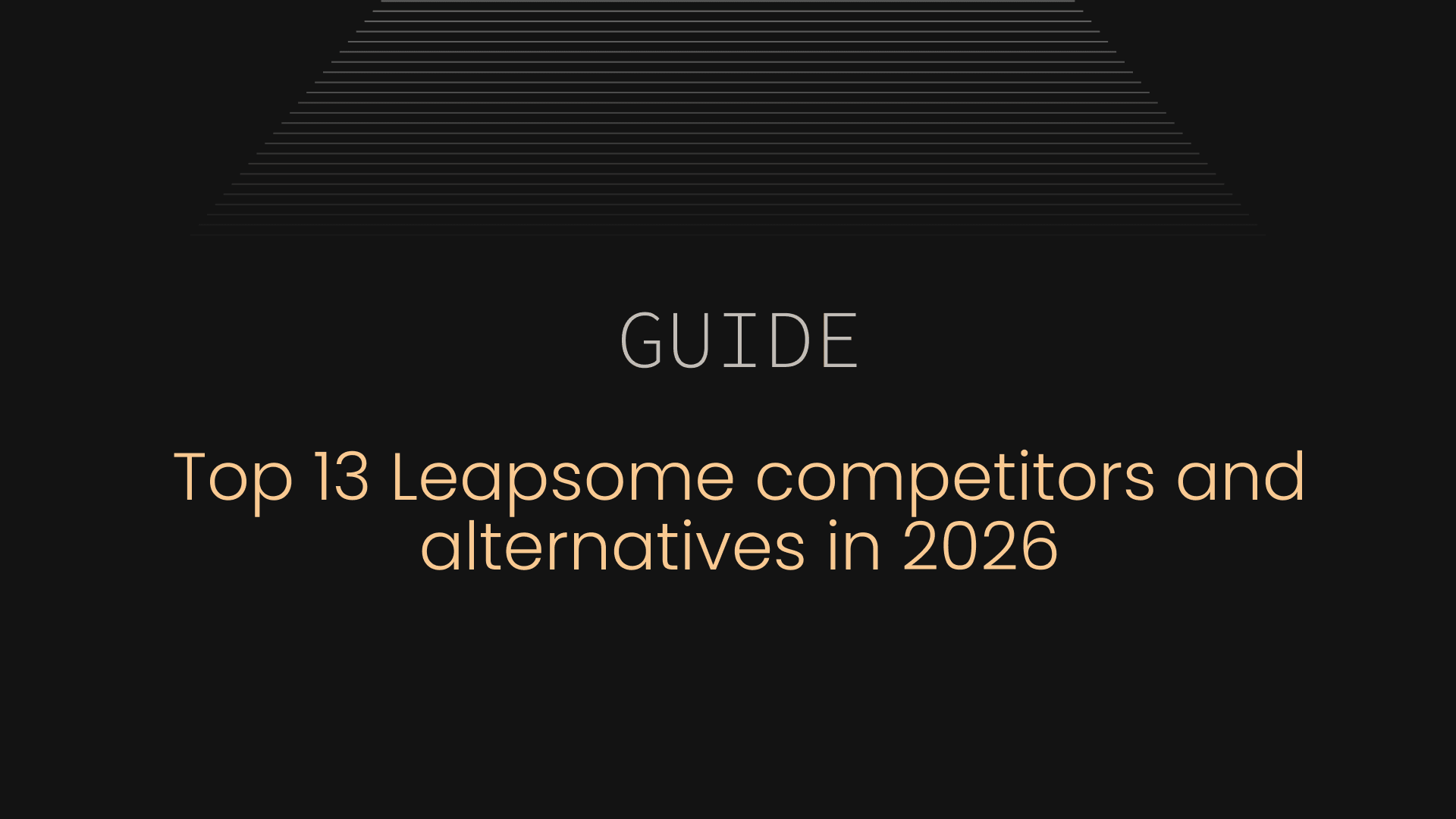
What are the top 13 Leapsome competitors and alternatives in 2026?
Leapsome remains a strong performance management platform, but newer AI-native solutions like Taito.ai now automate performance feedback, goal setting, and coaching. This guide compares the top 13 alternatives for 2026 and helps teams choose the best fit for their size and goals.
Leapsome is widely recognized as one of the leading people enablement platforms, combining performance management, OKRs, feedback, and learning in a single system. As AI and automation transform how teams manage growth and development, many organizations are exploring alternatives that offer greater automation, real-time insights, and lighter workflows.
According to Gartner’s 2025 predictions, AI could become the foundation of performance management as organizations automate performance workflows and feedback cycles. Similarly, McKinsey’s HR Monitor 2025 shows that high-performing companies using automation and AI in HR achieve up to 3x greater efficiency, reducing manual HR tasks and enabling continuous employee development.
This guide breaks down the top 13 Leapsome competitors and alternatives for 2026, including modern AI-native platforms like Taito.ai, which integrate automated feedback, coaching, and performance insights into a continuous enablement flow.
What is Leapsome?
Leapsome is a people enablement platform designed to unify performance management, employee feedback, learning, and OKRs in one tool. It’s used by HR and People teams across growing organizations to drive alignment, engagement, and skill development.
Known for its flexibility and broad functionality, Leapsome helps organizations structure employee growth and goal-setting. However, it often requires configuration time and manual setup, making it best suited for teams ready to invest in a full-featured system.
Why consider Leapsome competitors?
While Leapsome provides a robust suite of features, many companies are now looking for tools that deliver faster setup, simpler user experiences, and more AI-powered automation.
Reasons to consider Leapsome alternatives include:
- Need for built-in AI to automate feedback and coaching
- Preference for faster implementation with less manual setup
- Desire for simpler pricing and scalability
- Interest in tools that provide continuous, real-time enablement
Quick decision matrix
| Tool | Best For | Key Strength |
|---|---|---|
| Taito.ai | Growth-stage and modern teams | AI-native performance enablement and coaching automation |
| Leapsome | Structured organizations | Unified OKRs, learning, and performance suite |
| Lattice | Larger HR teams | Comprehensive performance management platform |
| CultureAmp | Engagement and analytics | Deep survey and data insights |
| 15Five | Small to mid-sized teams | Simple check-ins and feedback culture |
| Betterworks | Enterprise OKR systems | Strong alignment and scalability |
| HiBob | HR operations teams | HRIS with engagement and performance features |
| Mesh.ai | AI-forward organizations | Continuous insights and performance nudges |
| Zavvy | Learning-oriented teams | Development journey automation |
| PerformYard | Professional services | Custom review workflows |
| Mirro | Feedback-driven companies | Recognition and lightweight reviews |
| Peoplebox | Scaling startups | OKR and performance automation |
| Engagedly | Culture-driven teams | Recognition, feedback, and gamification |
Before diving into the full list, here’s how we compared each platform.
We evaluated each platform based on five criteria: automation depth, AI capabilities, integrations, scalability, and employee feedback quality. These factors reflect what modern HR and performance enablement teams value most in 2026.
1. Taito.ai
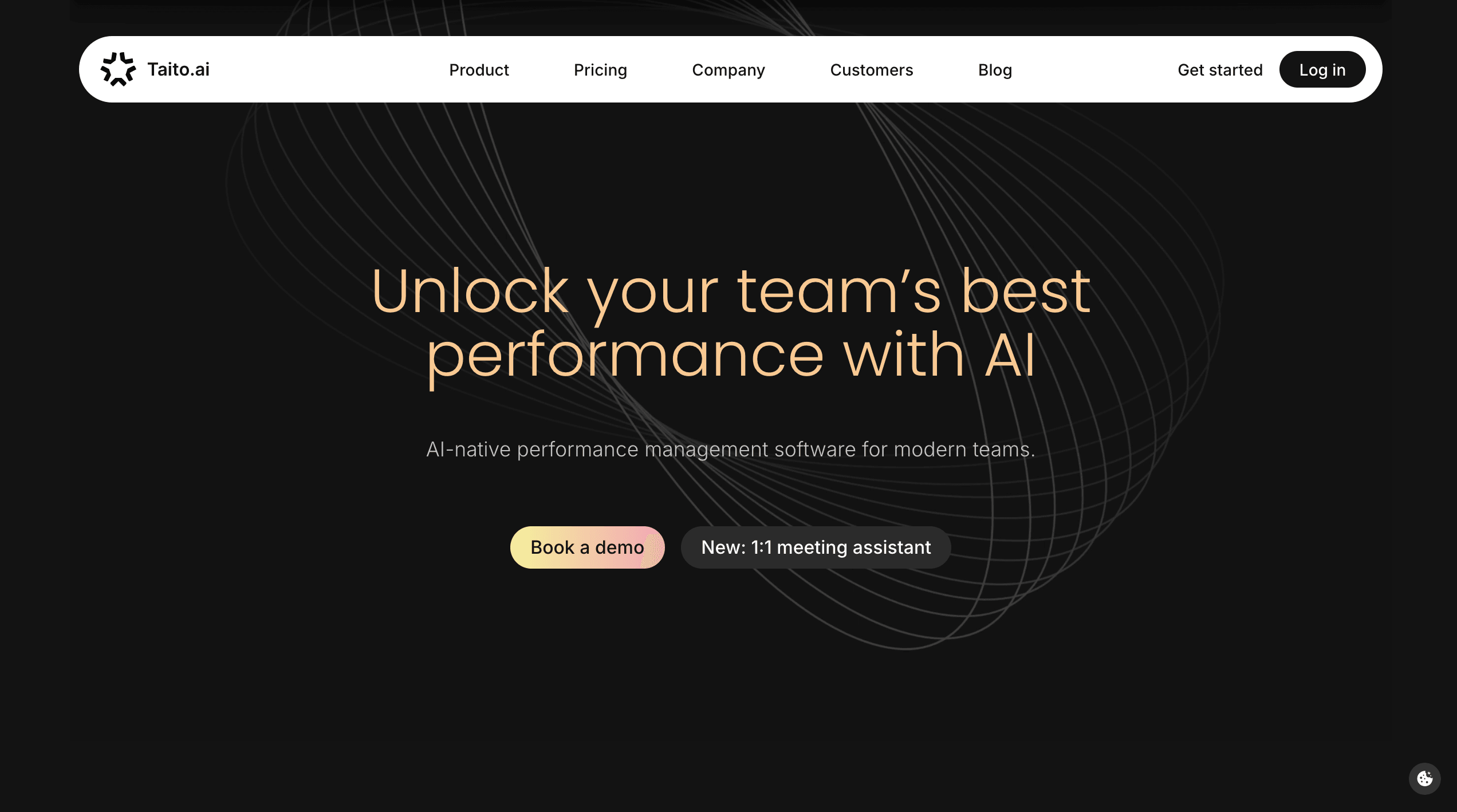
Overview: Taito.ai is an AI-native performance enablement platform that unifies expectations, continuous feedback, and coaching. It automates much of the manual work found in traditional review cycles.
Strengths:
- AI-generated role and expectations frameworks
- Continuous feedback collection linked to personal goals
- 1:1 meeting assistance and coaching prompts for managers
Limitations:
- Newer ecosystem, still expanding analytics and enterprise reporting
- Fewer legacy integrations than older tools
Integration & Onboarding: Integrates with Slack, Google Workspace, and major HRIS systems; onboarding takes days, not weeks.
Pricing Range: Mid-range and scalable from startups to enterprise.
Best for: Teams looking for an AI-first alternative that automates growth and performance discussions.
2. Lattice
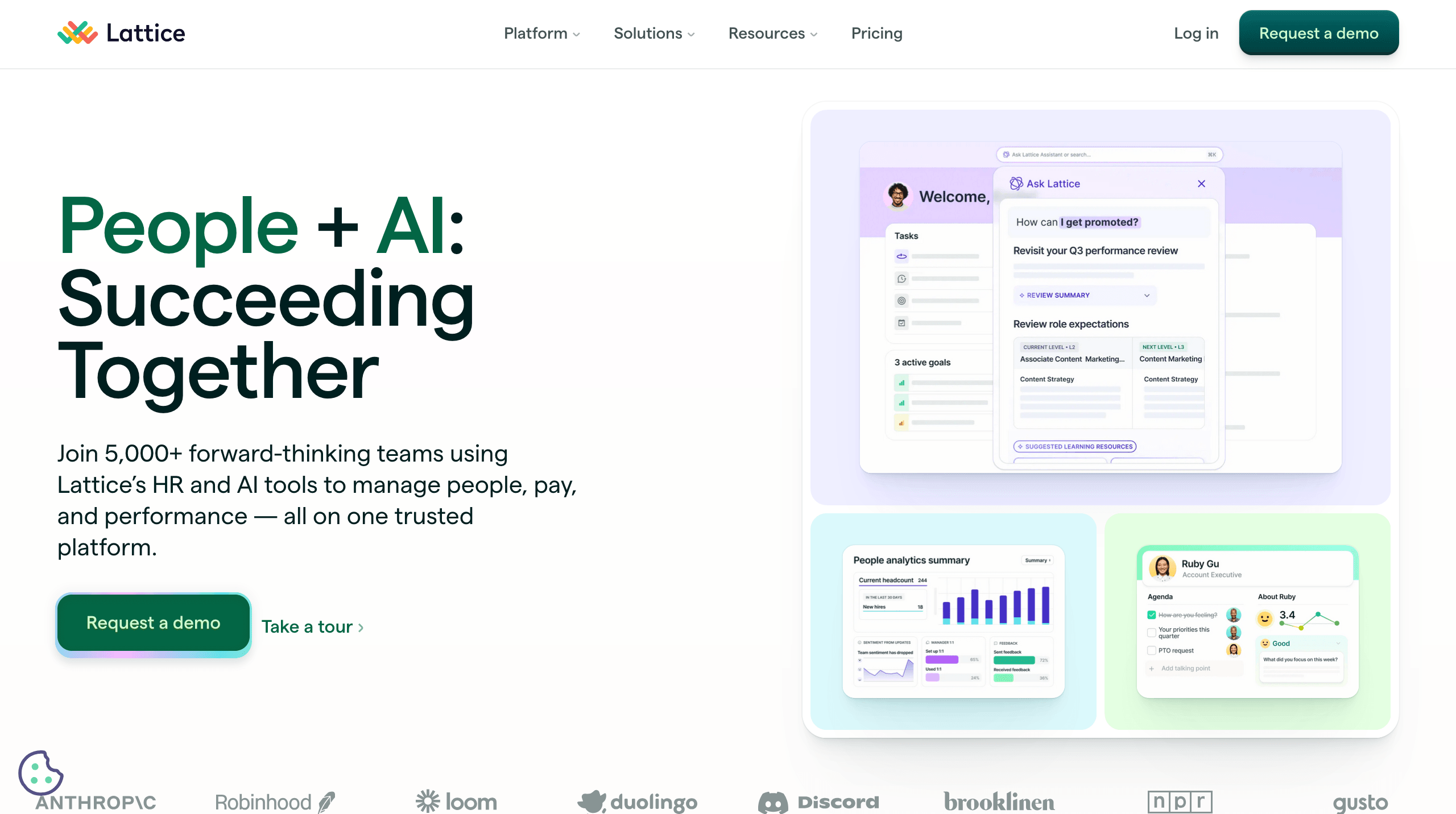
Overview: A comprehensive performance management and engagement suite used by enterprise HR teams.
Strengths:
- Broad functionality across reviews, goals, and engagement
- Customizable frameworks for large organizations
Limitations:
- Heavy configuration requirements
- Less intuitive for smaller teams
Integration & Onboarding: Integrates with HRIS and productivity tools; onboarding can take several weeks.
Pricing Range: Mid to enterprise-level.
Best For: Larger companies managing full HR programs.
3. CultureAmp
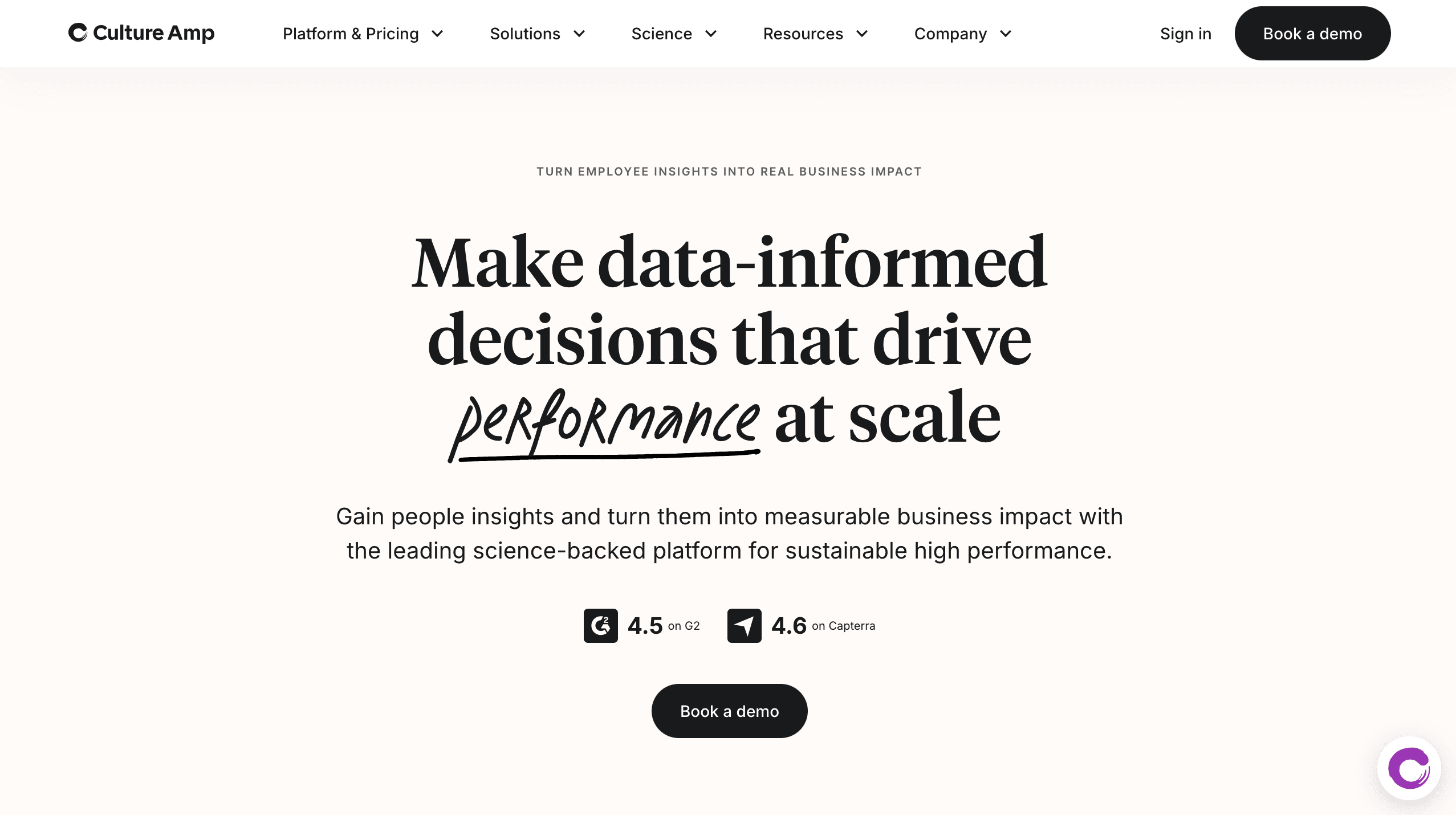
Overview: Known for engagement analytics and benchmark data, CultureAmp helps organizations connect performance and culture.
Strengths:
- Advanced survey analytics and benchmarks
- Excellent reporting tools for engagement tracking
Limitations:
- Manual configuration of review processes
- Limited automation features
Integration & Onboarding: Integrates with Slack, Workday, and HRIS systems; moderate onboarding time.
Pricing Range: Mid to high range.
Best For: HR leaders focused on engagement and organizational culture.
4. 15Five
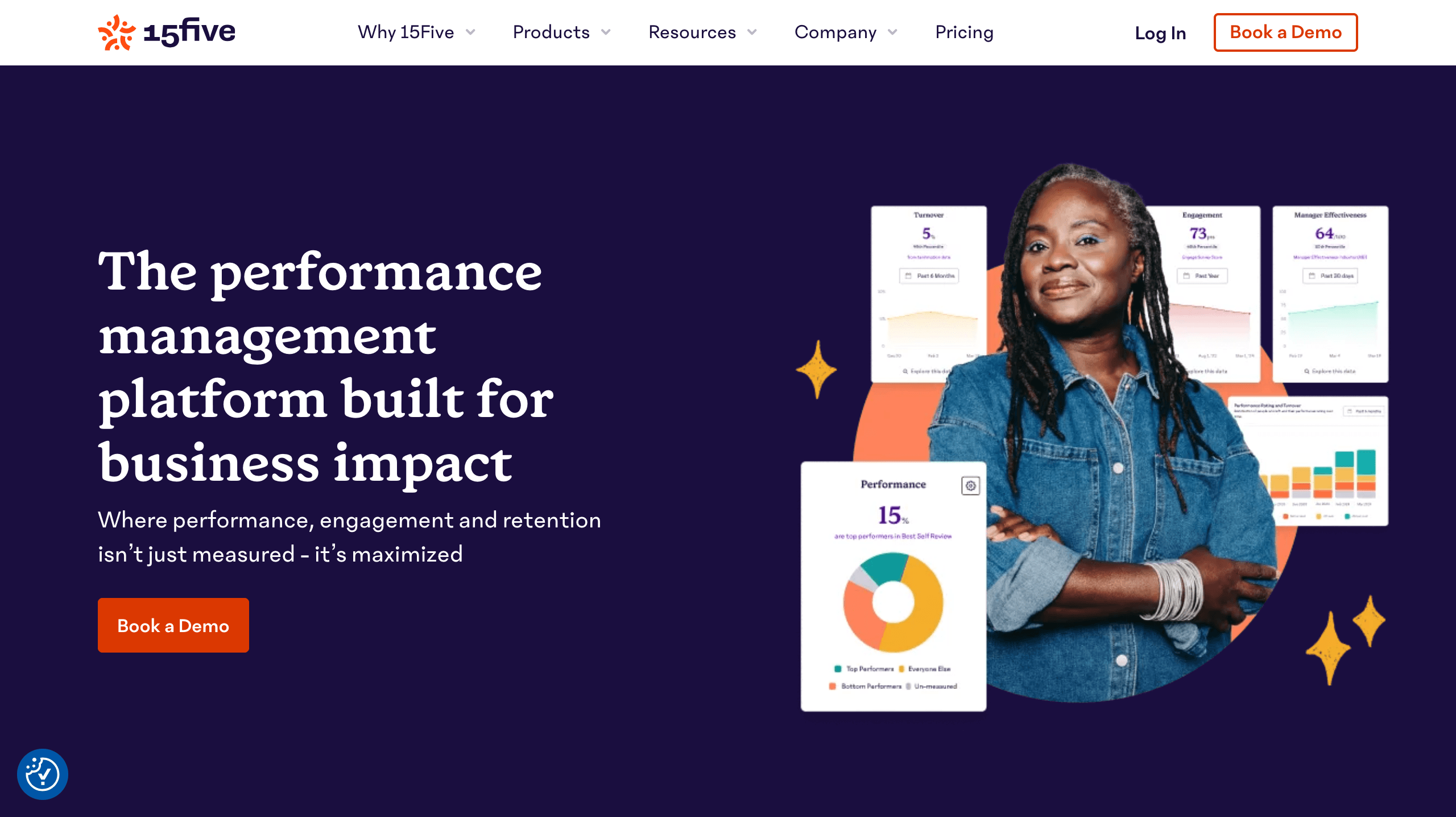
Overview: 15Five enables managers to run check-ins, feedback, and recognition through a simple, habit-forming system.
Strengths:
- Simple weekly check-ins and feedback workflows
- Great adoption across remote teams
Limitations:
- Limited analytics capabilities
- Lacks advanced OKR support
Integration & Onboarding: Slack and HRIS integrations available; onboarding in under a week.
Pricing Range: Affordable for SMBs.
Best For: Small and mid-sized teams seeking an intuitive feedback rhythm.
5. Betterworks
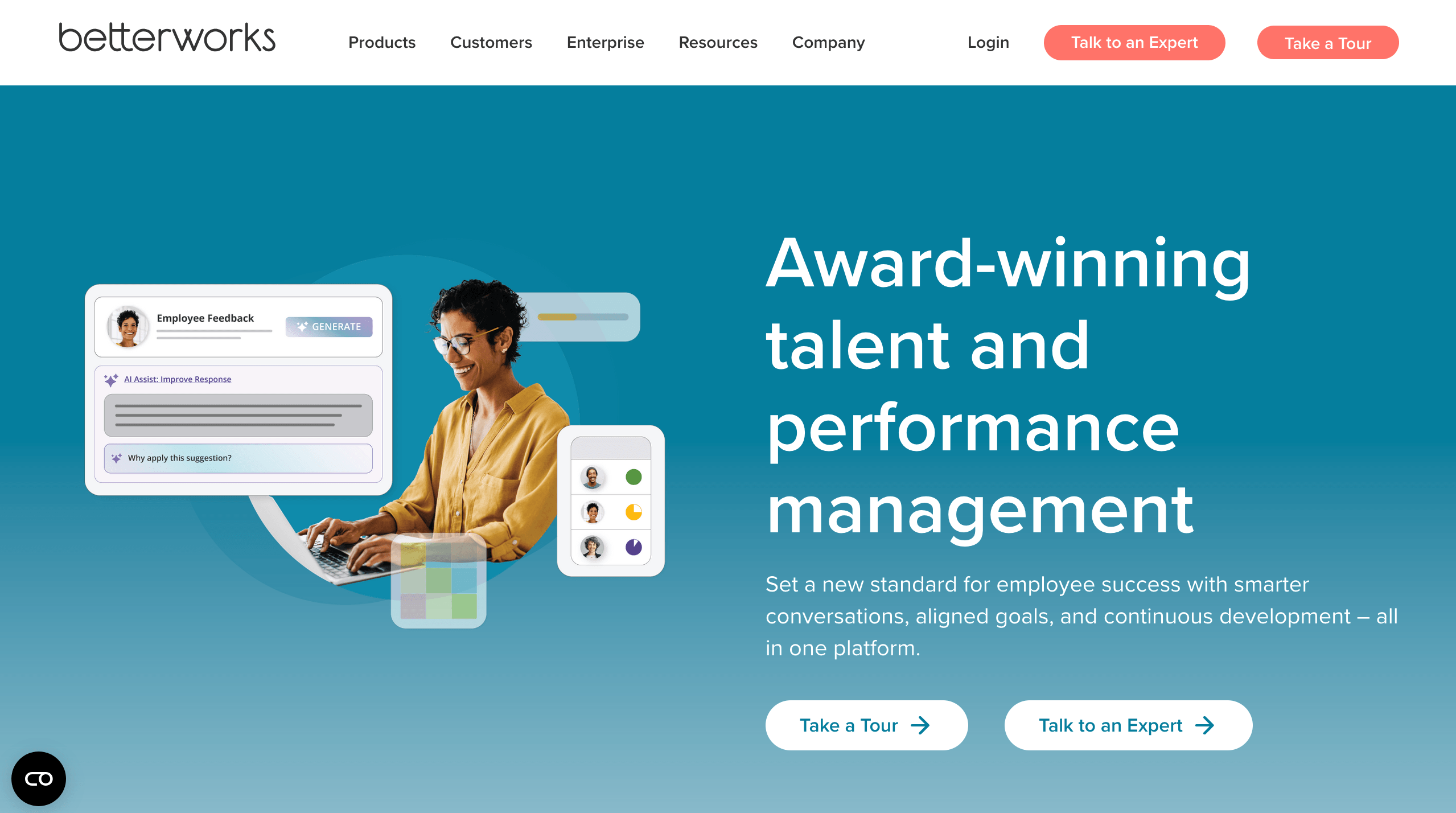
Overview: An enterprise-grade OKR and performance solution focused on goal alignment and measurable outcomes.
Strengths:
- Excellent scalability and analytics
- Enterprise compliance and security
Limitations:
- Complex setup for smaller organizations
- Higher pricing compared to mid-market tools
Integration & Onboarding: Integrates with Teams, Slack, and HR systems; setup can take several weeks.
Pricing Range: Enterprise-level.
Best For: Large organizations managing strategic OKRs.
6. HiBob
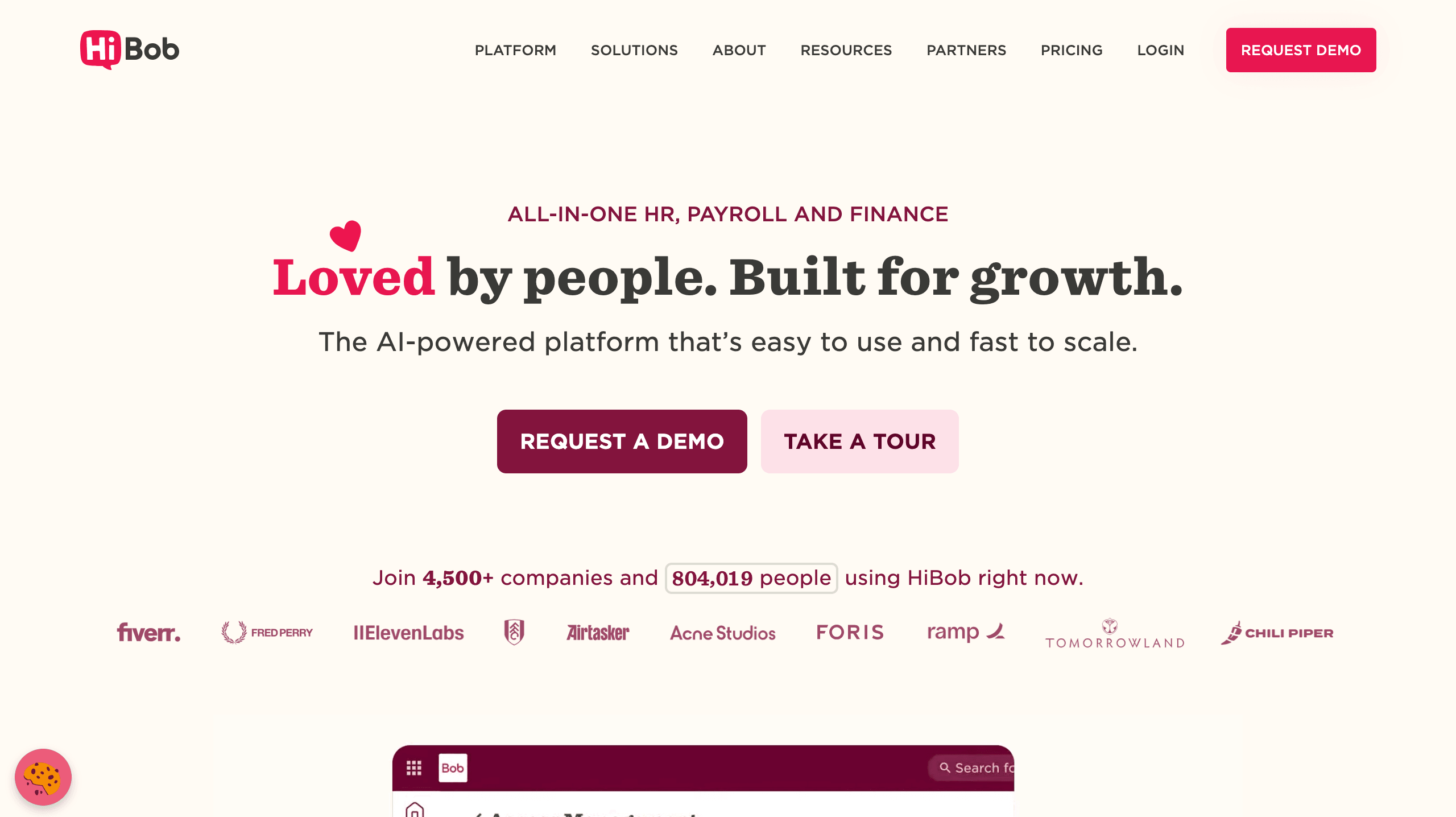
Overview: HiBob merges HRIS, performance management, and engagement tracking into one modern platform.
Strengths:
- Unified HR operations and performance modules
- Modern, user-friendly interface
Limitations:
- Limited automation beyond HR workflows
- Requires HR admin oversight
Integration & Onboarding: Connects with HR, payroll, and recruiting platforms; onboarding takes 2 to 3 weeks.
Pricing Range: Mid-range.
Best For: HR teams seeking one integrated HR and performance system.
7. Mesh.ai
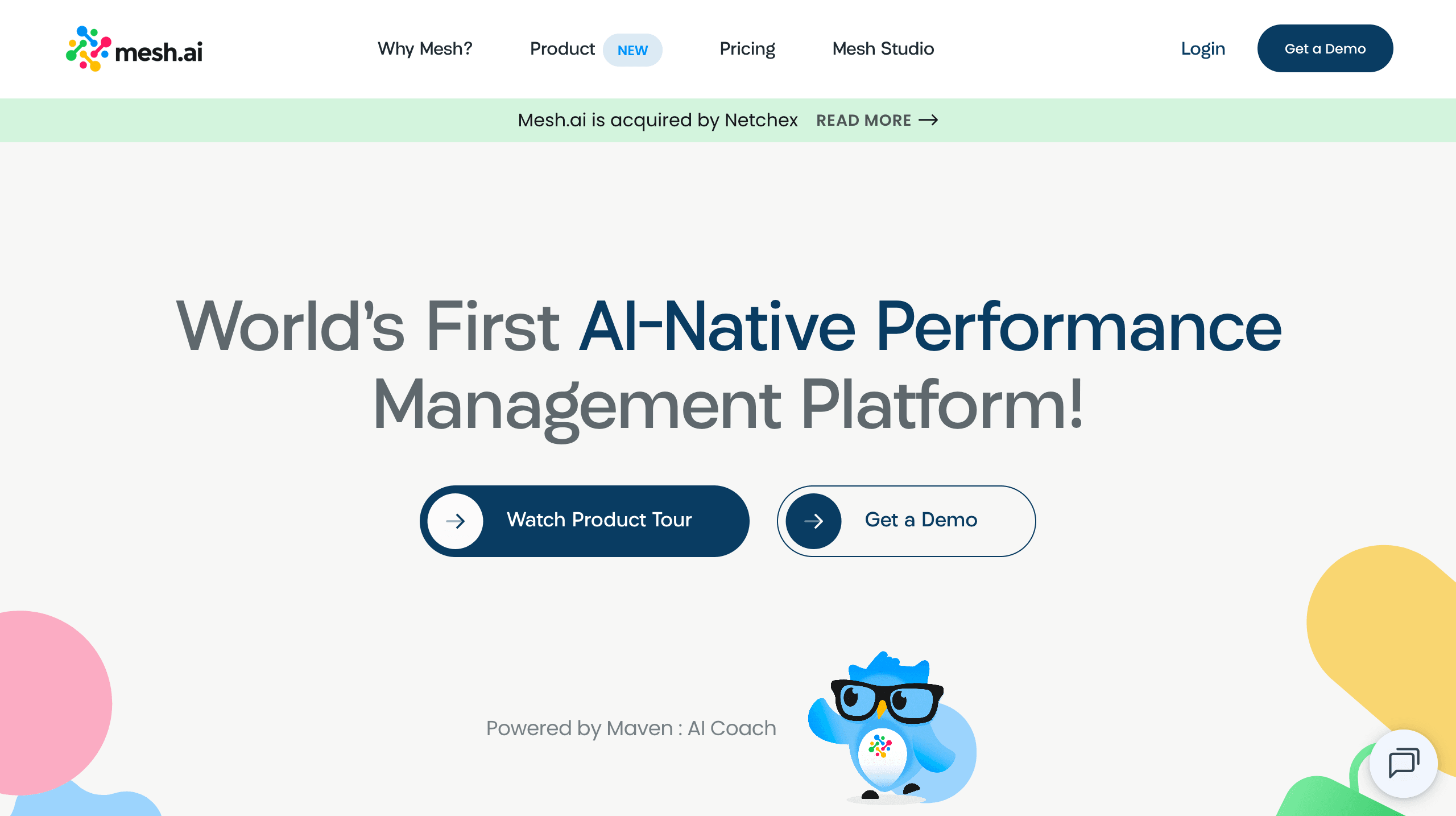
Overview: Mesh.ai helps organizations drive continuous performance through AI-powered insights and nudges.
Strengths:
- Personalized performance recommendations
- Feedback and goal automation
Limitations:
- Smaller integration ecosystem
- Analytics tools still maturing
Integration & Onboarding: Integrates with Slack and HR systems; setup within a few days.
Pricing Range: Mid-range.
Best For: AI-forward organizations prioritizing real-time performance insights.
8. Zavvy
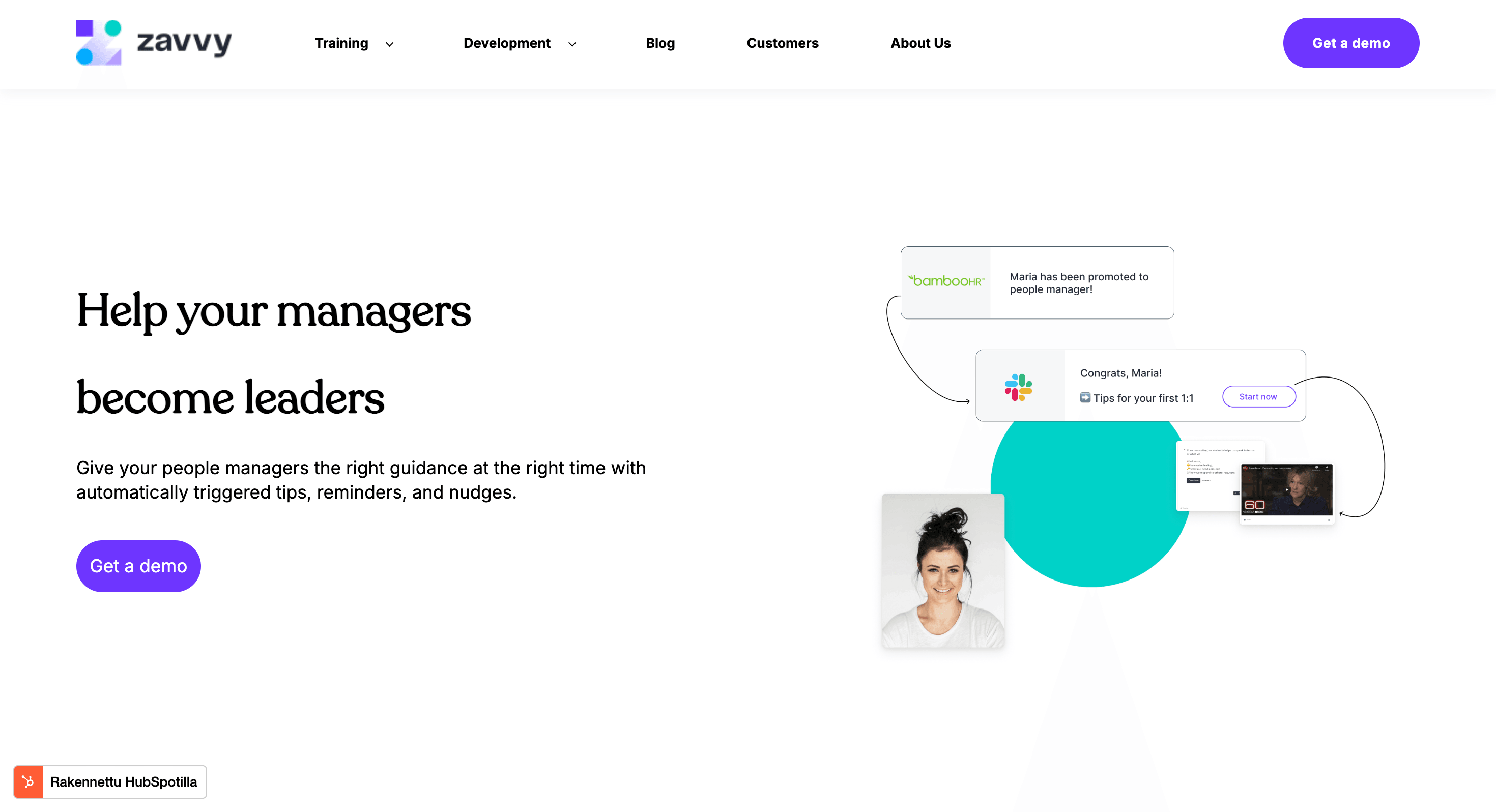
Overview: Zavvy blends feedback, learning, and performance into automated development journeys.
Strengths:
- Strong connection between learning and performance
- Easy-to-customize workflows
Limitations:
- Fewer analytics features than enterprise tools
- Smaller customer base
Integration & Onboarding: Slack and Google Workspace integrations; guided onboarding.
Pricing Range: Mid-range.
Best For: Learning-driven teams building growth cultures.
9. PerformYard
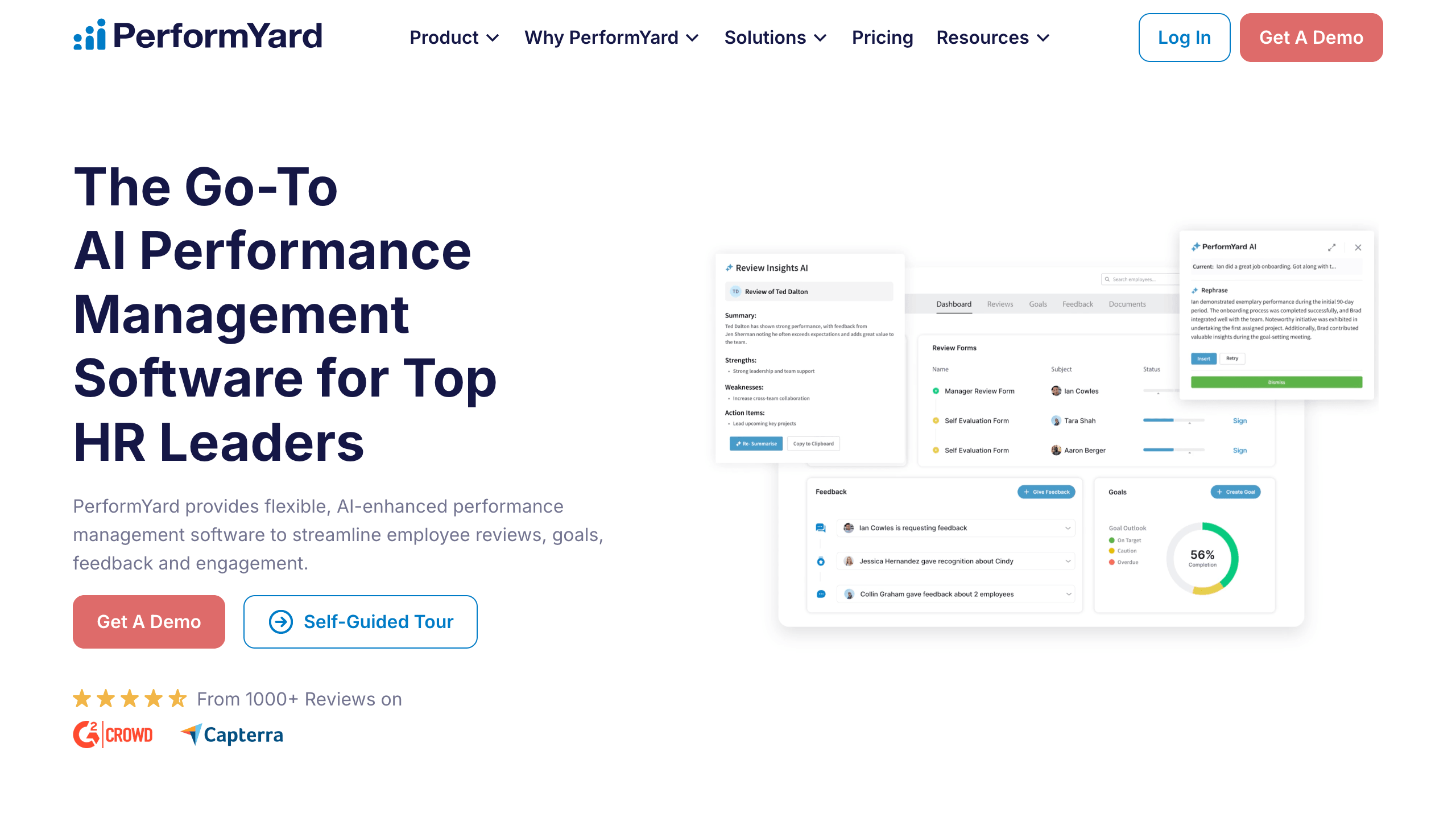
Overview: A flexible performance management platform designed for professional services and mid-sized organizations.
Strengths:
- Configurable review templates
- Transparent performance data
Limitations:
- No built-in AI functionality
- Limited real-time feedback automation
Integration & Onboarding: Integrates with HR systems and SSO; guided onboarding.
Pricing Range: Mid-range.
Best For: Teams needing tailored review cycles.
10. Mirro
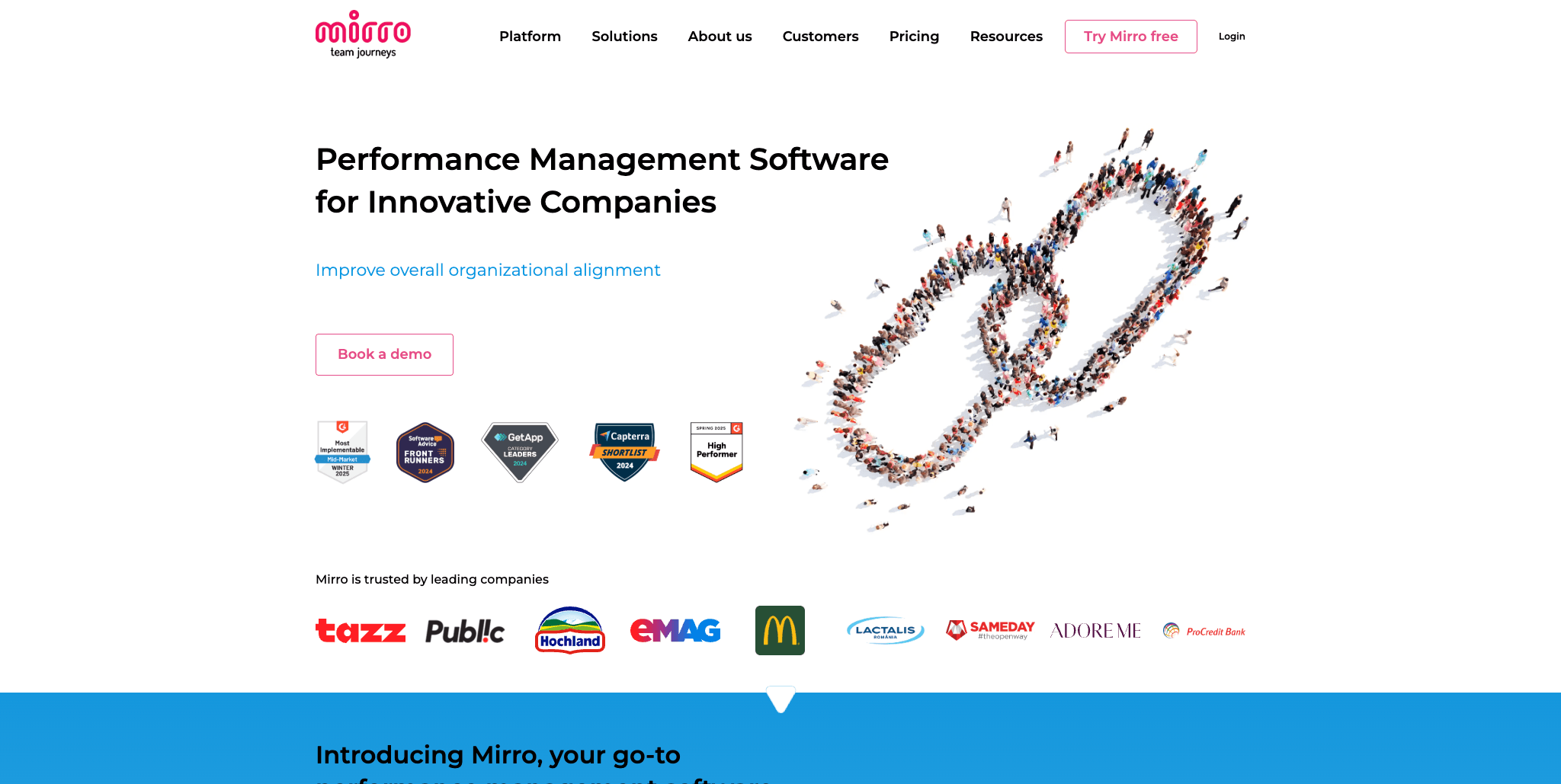
Overview: Mirro is a recognition and performance tool that simplifies feedback and fosters engagement.
Strengths:
- Easy-to-use interface
- Encourages recognition and transparency
Limitations:
- Limited OKR tracking
- Basic analytics
Integration & Onboarding: Slack and Teams integrations; quick onboarding.
Pricing Range: Affordable.
Best For: SMBs prioritizing recognition and culture.
11. Peoplebox
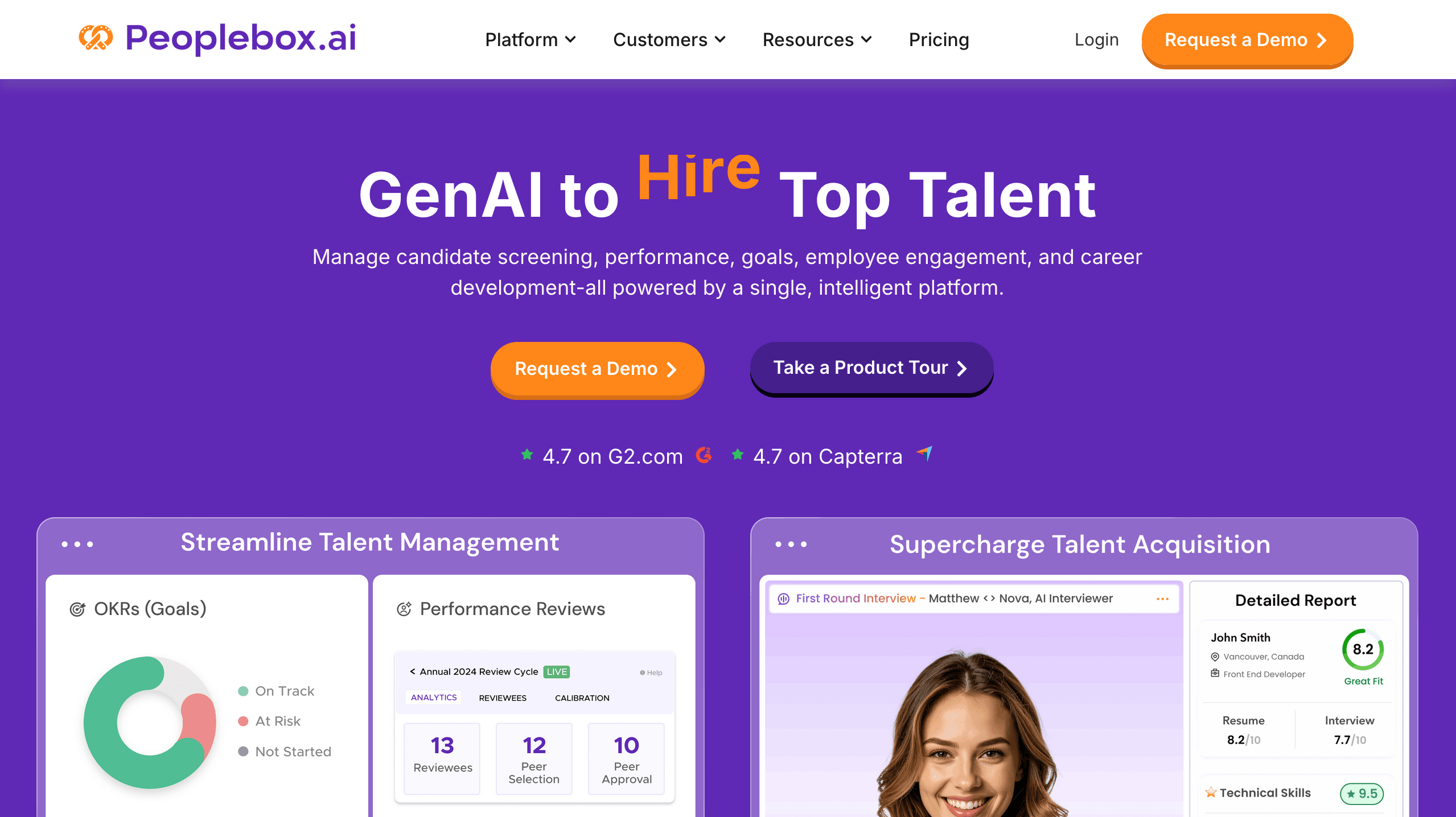
Overview: Peoplebox automates OKRs and performance workflows, built for fast-scaling startups.
Strengths:
- AI-driven OKR recommendations
- Simple dashboards and flexible setup
Limitations:
- Limited analytics
- Fewer engagement tools
Integration & Onboarding: Integrates with Slack, Jira, and HR systems; setup within days.
Pricing Range: Affordable and startup-friendly.
Best For: Growing tech companies scaling performance management.
12. Engagedly
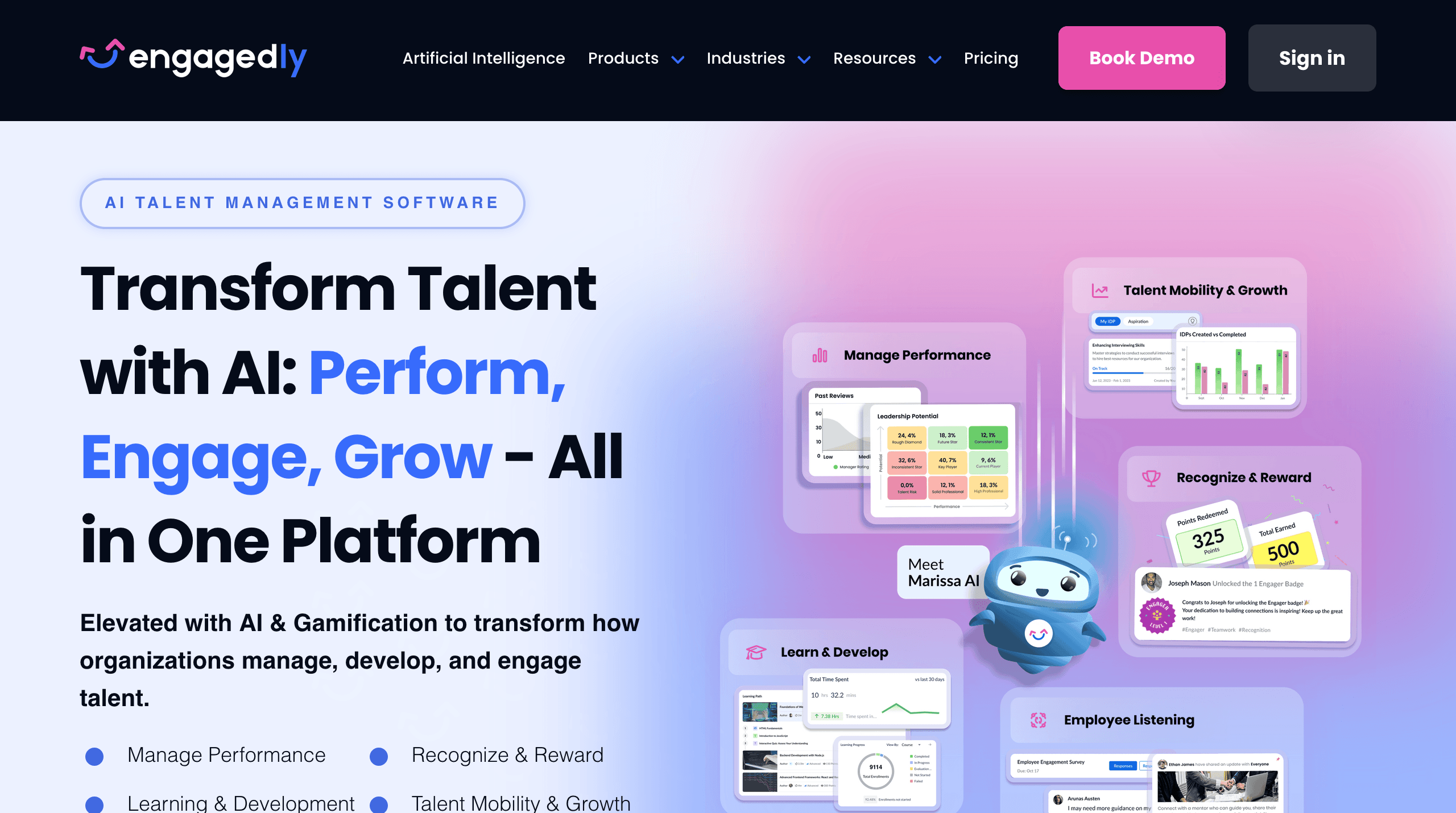
Overview: A people management suite that combines engagement, recognition, and learning management.
Strengths:
- Gamified performance tools
- Supports engagement, learning, and reviews
Limitations:
- Interface complexity for smaller companies
- Requires onboarding support
Integration & Onboarding: Connects with Teams, Slack, and HR tools; guided onboarding.
Pricing Range: Mid-range.
Best For: Culture-driven companies with diverse HR needs.
13. Performica
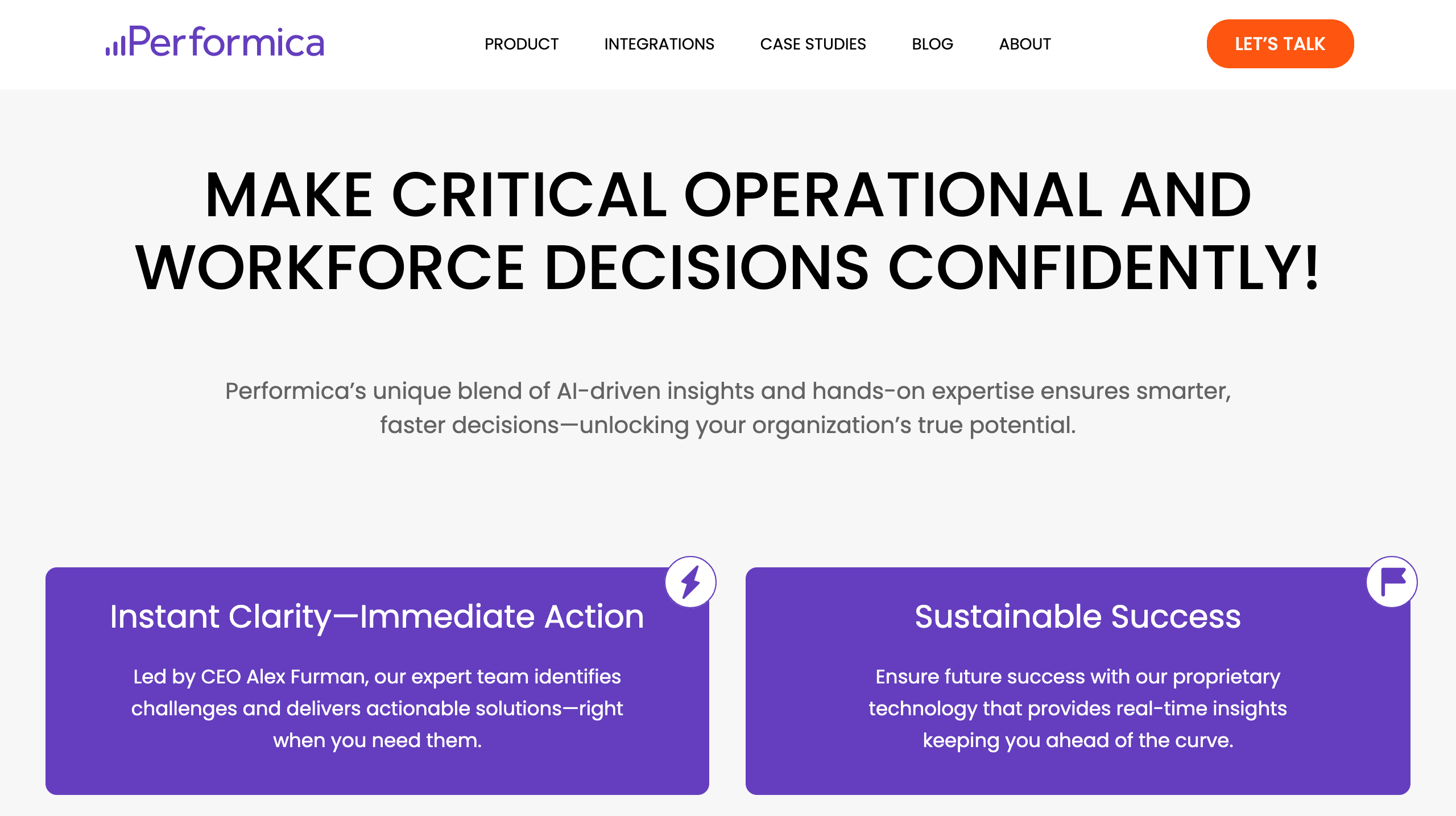
Overview: Performica is an AI-driven people analytics and performance platform that identifies collaboration patterns and team impact. It helps HR leaders understand influence networks and productivity drivers.
Strengths:
- AI-based organizational network analysis (ONA)
- Connects engagement data with team performance
- Reveals high-impact contributors and relationships
Limitations:
- Emerging tool with fewer case studies
- Suited for data-mature organizations
Integration & Onboarding: Works with HRIS and communication tools like Slack, Teams, and Google Workspace; onboarding takes 2 to 3 weeks.
Pricing Range: Mid- to high-range, depending on analytics depth.
Best For: Data-driven HR teams seeking to link collaboration insights with performance outcomes.
Recap: what is the best solution for us?
Finding the right Leapsome alternative depends on your organization’s size, goals, and readiness for AI-driven automation. Here’s how they compare:
- Best AI-native platform: Taito.ai
- Best for enterprise OKRs: Betterworks
- Best for lightweight feedback: 15Five
- Best for HR integration: HiBob
- Best for learning and growth: Zavvy
- Best for analytics and people insights: Performica
Closing summary
Performance management is evolving into performance enablement, where feedback, learning, and growth happen continuously with the help of automation and AI.
While Leapsome remains a strong all-in-one platform, new solutions like Taito.ai and Performica are redefining what modern enablement looks like. They make feedback faster, insights smarter, and coaching more personalized, helping teams focus on growth instead of admin.
FAQs
1. What’s the best Leapsome alternative for startups?
Taito.ai and Peoplebox offer scalable, affordable options with quick setup.
2. Which Leapsome alternatives use AI and automation?
Taito.ai, Mesh.ai, and Performica integrate AI to power insights, feedback, and automation.
3. What’s the best choice for large enterprises?
Betterworks and Lattice provide enterprise-grade OKR and performance infrastructure.
4. Which tools integrate learning and performance?
Zavvy and Engagedly combine learning modules with feedback systems.
5. Which alternatives excel in people analytics?
Performica uses AI to surface collaboration insights and measure team impact.